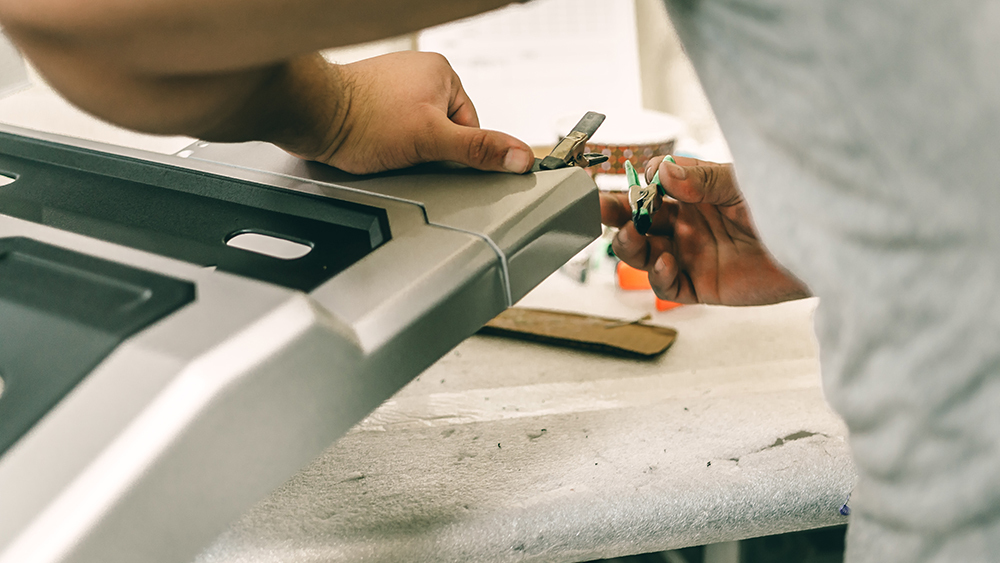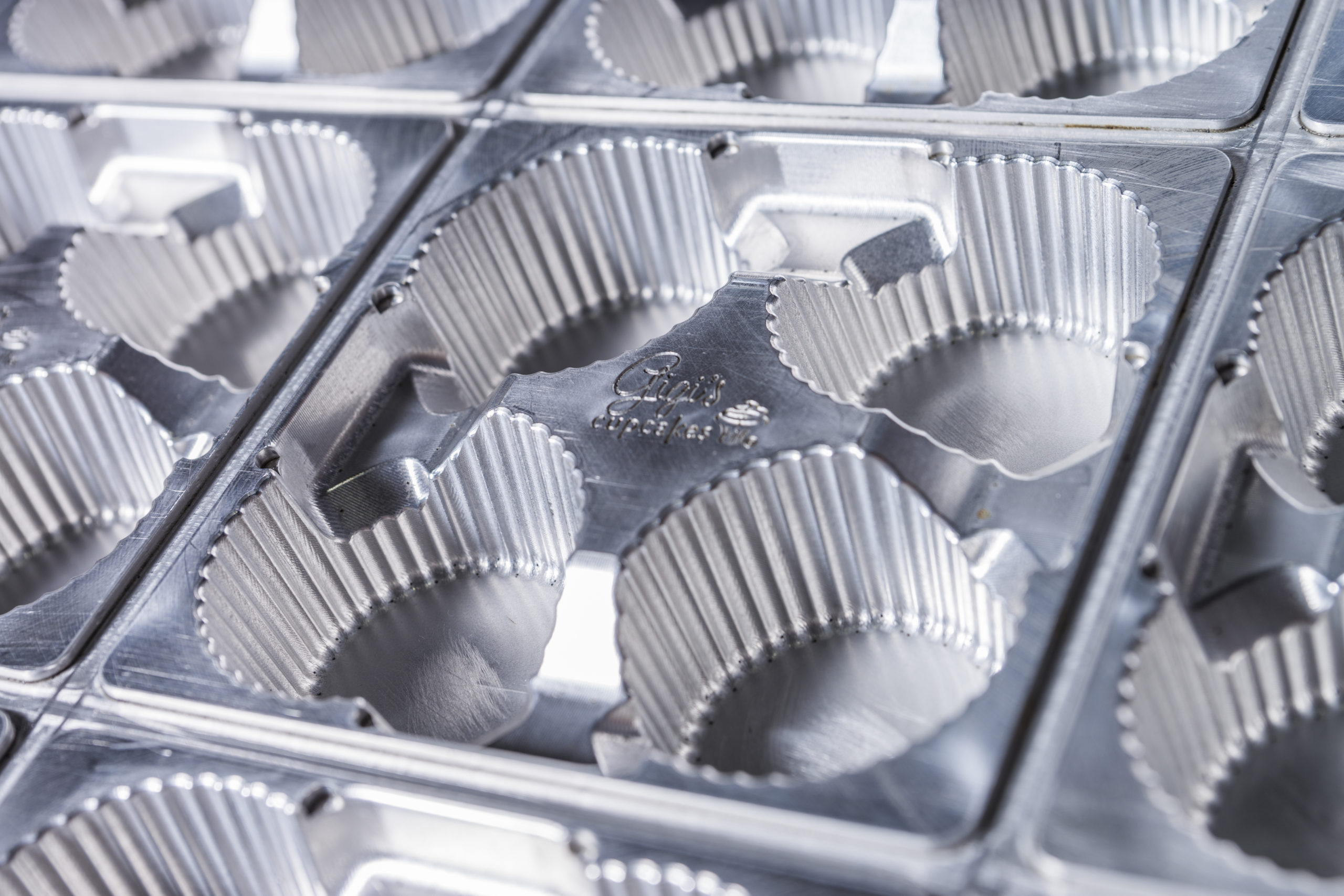What is Thermoforming?

Unless you’re sitting in the middle of the woods, you’re probably near some thermoformed plastic right now. Even if you are in the woods – chances are, you’re drinking from a thermoformed cup, carrying a backpack with plastic parts, or carrying a phone – and still benefiting from thermoforming!
We’d like to introduce you to what goes into the thermoforming process, explain where it came from, and show how it’s become a part of everyday life.
At Global Thermoforming, we have over 30 years of industry experience, and we’re always happy to share our knowledge of our favorite subject.
History of Thermoforming
The beginnings of thermoplastic molding go back to the last half of the 1800s. Back in 1855, Alexander Parkes patented his process for using liquid collodion – a byproduct of developing photos. This was the first thermoplastic-which he later patented. If you’ve ever seen antique celluloid, you’ve been introduced to some of the earliest examples of these molded pieces. They were usually smaller items: cosmetic cases, buttons, combs, toys, and fountain pens.
By the 1930s, an automatic thin-sheet roll-fed thermo-former was developed, setting off a whole new era of plastic production. Plastics became thicker and stronger and were even used in WWII for items like aircraft windshields and gun turrets that demanded maximum durability.
Today, thick gauge plastics have transformed surfaces and structures in everything from car interiors to HVAC components to medical equipment. For thin gauge applications, simply look to items like plastic cups, shipping trays, and disposable containers. Amazingly, these diverse products, made of many thicknesses and a wide range of materials, share many of the same production steps.
The Thermoforming Process
Whether using thick or thin gauges, some may wonder specifically, what is thermoforming? Thermoforming is the process of taking a sheet of plastic material, heating it up until it’s pliable, forming it into a three-dimensional shape, then trimming and finishing it into a usable product.
Here at Global Thermoforming, we are known for our expert execution of both types of processes for our clients. In our manufacturing facilities, we work with a huge range of materials, each with its own unique capabilities, advantages and tolerances.
Although there are many specialized manufacturing features that Global Thermoforming utilizes on projects, these plastics all undergo a similar, step-by-step process. In our facilities, this ensures high-quality results, no matter what the final product or part – or the gauge of thermoplastic that is used.
Design
Most thermoformed products start as a CAD model or engineered drawings. At Global Thermoforming, our engineers are usually involved in developing or improving customer models.
01
Mold and Materials Selection
This is where we assist customers in determining which type of plastics and molds are right for their products. Depending on factors such as the production run, type and size of products, and more, we may decide on using plastic, aluminum, steel, or other options.
02
Tooling
After selecting the correct mold material, the tooling process creates the mold that the plastic will be formed against. Of the many elements that contribute to a successful thermoforming operation, perhaps the most important is mold design. Well-designed molds ensure consistent quality in the finished parts.
03
Vacuum Thermoforming
At this point in the process, the plastic sheet is heated into the ideal forming temperature and then formed into the desired shape to fit the mold. This can be done with vacuum pressure, air pressure, or both. The plastic then cools and is taken off the mold with zero residual stress.
We use a variety of thermoforming machines to form products. Shuttle, rotary, or roll-fed configurations may be utilized, depending on many factors. We are recognized for our quality thermoforming and close tolerance forming.
04
CNC Routing and Trimming
To remove any excess plastic and perform any other operation that creates holes, cutouts, or other design features required, we use automated 3-axis, 4-axis and 5-axis trimmers.
There are also a number of secondary operations that can be undertaken after the product is finished. We’re proud to offer a full range of in-house services that begin with concept development. We continue with specialties such as trimming, fastening formed parts after manufacture.
We also have extensive capabilities for adding decorative and functional finishes. These include textured and embossed surfaces that can be customized for texture or decoration.
We also can add printing via dyes, offset printing, screen printing, and pad transfer to give information, add details, label parts with hot stamping, heat transfers, gummed labels, and decals, and improve function and aesthetics with painting.
05
What Can We Do With Thermoforming?
As we discussed in our last blog, thermoformed plastics have become the best choice for nearly every industry. At Global Thermoforming, we have the capacity for working with up to 1” thicknesses, enabling us to work with clients such as Nissan, Boeing, Rockwell Collins, Bridgestone, and other companies that require both item durability and exacting manufacturing tolerances.
Thermoforming has produced products that have been used in the ocean, on land, and in the air. They hold and transport items, like totes and pallets, protect sensitive equipment, such as radomes and electronics enclosures, and even make us stronger and healthier, when used in workout equipment and medical devices.
Our thin gauge capabilities help companies like GooGoo Clusters, GiGi’s Cupcakes, and other food-related businesses keep their products safe, clean, and secure. We help clients succeed at their retail outlets with innovative clamshell packaging, point-of-purchase displays, and blister packs.
No matter how many challenges we’ve taken on in the thermoforming industry, we never stop seeing new potential in the process of heating, molding and finishing plastic. After 165 years, it’s still finding new applications! We welcome your questions about how we can help your business with our engineering, design, and manufacturing expertise.
At Global Thermoforming, we stay involved through the entire process, and our ability to produce large parts with thin walls in a variety of shapes has led to the use of thermoforming in many diverse industries we serve. Including Aerospace Components, Medical Components, Bath & Shower Furnishings, Pools & Spas, Recreational, Vehicle Components, Sidings & Windows, Consumer Products, Appliances and Housewares, Automotive Components, Marine Components, Lawn & Garden, Agricultural Components, HVAC Components, Disposable Packaging. Contact us to learn more about Global Thermoforming.
Have an upcoming project?
Whatever your manufacturing needs may be, Global Thermoforming can put our engineering, design, and manufacturing expertise to work for you.


